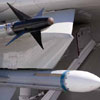
Protecting Naval Ordnance
Video surveillance gets an upgrade
- By Del V. Salvi
- Dec 01, 2011
The Naval Ordnance Test Unit (NOTU) at the Cape Canaveral,
Fla., Air Force Station supports and tests sea-based
weapons in a safe environment. The unit also operates the
Navy Port at Port Canaveral, supporting submarines and
surface ships of the U.S. Atlantic Fleet and of foreign navies, as well
as the assets of the Military Sealift Command.
The unit’s location, which is surrounded by ocean on three sides,
poses a challenge for electronic devices to operate dependably due to
its corrosive, salt-water environment.
Video surveillance at NOTU previously consisted of an outdated
system using four black-and-white PTZ cameras, a PTZ controller
and four black-and-white video displays tied to VCRs. The system
needed to be updated, and new NOTU turned to Millennium Communications of Melbourne,
Fla., to design and install a new system. Founded by Angel Echevarria,
Millennium has a 10-year history of providing surveillance and
two-way radio systems to commercial, hospitality, educational and
federal facilities throughout Brevard County. Echevarria and Mark
Soliman, president of the company, designed the NOTU system and
oversaw its installation.
Millennium designed NOTU’s new system based on Samsung
technology for its security and efficiency benefits. Faced with the outdated
black-and-white cameras, their overall goal was to improve image
clarity. Additionally, the Samsung solution provided automatic
PTZ tours and vastly improved video storage capacity.
Millennium opted not to use IP-based network cameras but decided
instead on the proven capabilities of Samsung’s analog technology,
which fully met NOTU’s needs.
The new system includes four Samsung weather-resistant PTZ
cameras, which capture high-resolution images and are protected by
integrated housings.
The PTZ line of cameras come equipped with features such as a
128x wide dynamic range and digital image stabilization with a 37x
optical zoom lens and auto-tracking capabilities. These cameras also
incorporate Samsung’s super noise reduction to minimize random
and fixed noise under low illumination in order to achieve excellent
low-light performance while reducing DVR storage space by as much
as 70 percent.
“We knew that the installation at the Naval Ordnance Test Unit
required cameras that combined high performance with outstanding
value,” Soliman said. “The Samsung PTZ camera with its integrated
housing fit the application well and provided a high-end product at a
good mid-range price.”
The cameras at NOTU provide video across fiber-optic cabling
to a Samsung DVR/storage system. The DVR provides high-resolution
real-time recording capability and provides smart thumbnail
and bookmark search capabilities, fast DVD backup—with a DVD
writer included as a standard feature—and easy control with intuitive
graphical user interface and mouse. It can also accommodate up to
two internal SATA HDD disk drives.
NOTU systems also use a Samsung keyboard PTZ controller to
provide system compatibility with multiple protocols. Its intuitive
keypad, large LCD window and ergonomic design provide for easy
operation. The system is monitored locally on base and uses fiber/
RS-485 transmission to control the cameras.
The video surveillance system is one of several security and surveillance
systems deployed at the site. Soliman says the benefits of the
Samsung system cannot be easily quantified beyond the benefits of
security to protect a military dock.
“Mission-critical applications like that of the Naval Ordnance
Test Unit clearly demonstrate the performance and value advantages
of Samsung technology for high-end applications,” said Frank
DeFina, senior vice president of sales and marketing at Samsung.
“As we continue to develop new imaging and
recording technologies, we are applying them
across our entire product line of IP and analog
solutions.”
This article originally appeared in the December 2011 issue of Security Today.
About the Author
Del V. Salvi is a freelance writer based in New York.